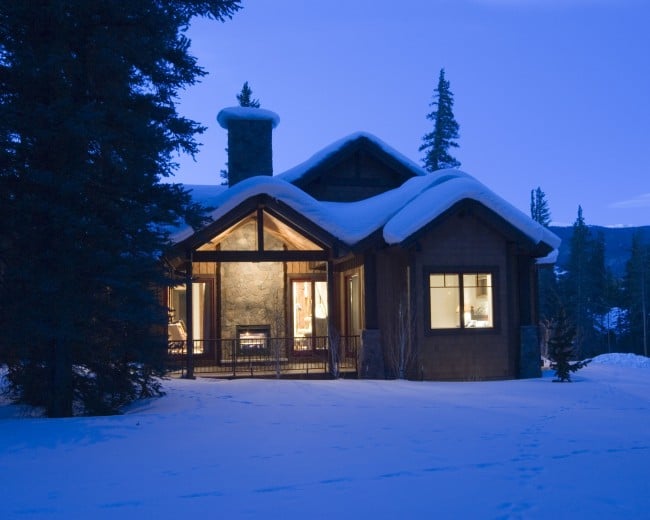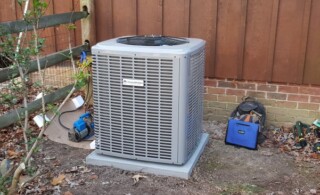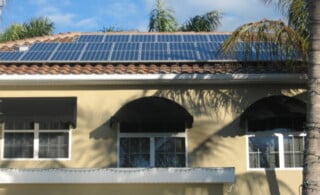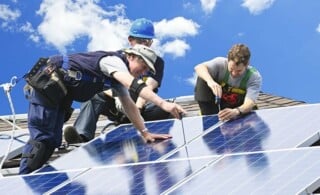
When the winter months approach, the instinct to bundle up and hibernate sets in. But when the power bills rise, you may find that keeping cozy can be costly. But with a few energy-saving tips, you can not only stay warm but lower your energy bills and reduce your carbon footprint.
First, consider the maintenance of your heating system. If you have a thermostat, set it to 68 degrees. Setting the thermostat higher than this adds an average two to five percent increase in energy costs for every degree. Consider lowering the temperature further at night, and if you are going away for an extended period of time, set the thermostat to 60 degrees to prevent straining the system on your return.
Cleaning and replacing furnace filters when recommended will increase efficiency and reduce costs. So will an annual furnace tune-up from a professional. Give the same attention to air filters and heating vents throughout your home. Clean out the dust and make sure they are not blocked to increase air flow.
If you have a fireplace, close the damper tight to keep out cold air. Next, you can check windows and doorways for leaks. There are a few different ways you can check your home for leaks. The first is a simple visual test. Check problem areas and caulking for any signs of gaps or cracks. Typical places that may have a gap and a draft are electrical outlets, door and window frames, baseboards, weather-stripping on doors, attic hatches, fireplace dampers, mounted air conditioners, cable and phone lines, vents and fans, and where the dryer vent passes through the wall. The second way to check for leaks is a pressurization test. To perform this test, choose a cool, windy day and turn off any water heaters and gas-burning furnaces. Shut all windows, doors, fireplace dampers, and exhaust fans. Next, light an incense stick and pass it around the edges of common leak areas. Wherever the smoke wavers or is drawn in or out of the room, there is a draft. You can also detect leaks by dampening your hand and feeling for cool air. Seal, caulk, or use weather-stripping on any leaks you discover.
Thousands of dollars in energy costs can be attributed to heat escaping from poorly insulated homes. Taking simple steps to insulate windows and doors with inexpensive insulation will significantly lower your energy costs. A storm window is also a powerful shield against the cold. Keep your curtains shut at night to keep in heat, but open them wide on sunny days to take advantage of solar energy.
Ready to start your green heating?
Find ProsA humidifier will also help your room feel more comfortable without turning up the thermostat. So will adding carpet to any bare floors. In addition, you should reverse the direction of your ceiling fan during the winter months to keep the warm air circulating downward. Refer to the owner’s manual, but generally, the fan should move in a clockwise direction to push heat down. On the other hand, exhaust fans in the kitchen and bathrooms pull hot air from the room. Use them in very short intervals during the winter months.
The hot water heater is a major consumer of energy in your home. Set the temperature below 120 degrees in the winter, and make an effort to reduce hot water use. Consider using a low-flow shower head. And washing laundry with cold water uses up to 90 percent less energy. Also, your dishwasher will typically use less hot water than hand-washing dishes, but turn off the heat cycle and allow the dishes to air-dry for additional energy savings. If you are worried about the potential for freezing water pipes because you’re not using as much heat and hot water, wrap them with a low-cost foam wrap.
Believe it or not, using the stove and oven can also waste significant amounts of heat. Toaster ovens and slow-cookers consume much less energy. Cleaning the burners on the stove will increase their efficiency, and also, make sure to use the appropriate-sized burner for the size of your pot: A small pot on a large burner can waste about 40 percent of the generated heat. When the oven is in use, do not open the door more often than necessary, as it loses 20 percent of its heat each time.
Finally, think about using energy-saving light bulbs in your home. Fluorescent lighting uses significantly less energy than incandescent lighting, and a huge saver during the holiday season is the use of fun and colorful LED lights. These use 90 percent less energy than incandescent lighting.
Click the links below for further details on winter energy-saving techniques:
- Winter Energy Saving Tips
- Winter Energy Savings and Saftey
- Stay Warm and Save Money: Winter Energy Saving Tips
- Energy Efficiency
- Fall and Winter Energy Saving Tips
- 8 Winter Energy-Saving Tips
- Energy Saving Tips for Winter
- Smart Ways to Save on Energy Costs in the Winter
- 10 Ways to Save on Energy Costs This Winter
 5 Home Improvements to Beat the Dog Days of Summer
5 Home Improvements to Beat the Dog Days of Summer  Keeping Cool in the Heat Wave
Keeping Cool in the Heat Wave  Solar Heating – About Passive & Active Systems
Solar Heating – About Passive & Active Systems  How to Choose the Best Smart Thermostat for Your Home
How to Choose the Best Smart Thermostat for Your Home  Solar Energy: Common Questions & What to Ask When Hiring Installers
Solar Energy: Common Questions & What to Ask When Hiring Installers 

Are You Familiar With This Topic? Share Your Experience.